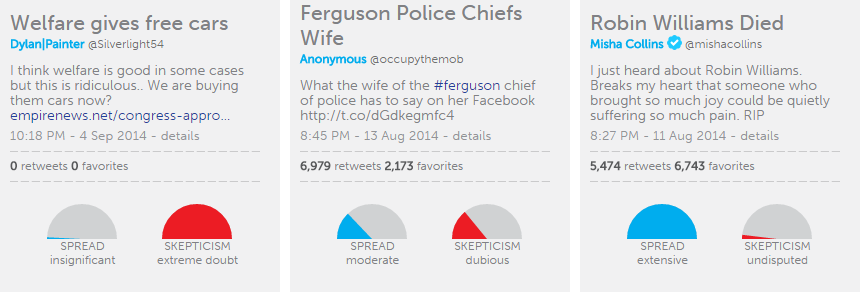News of Turkish airplane shooting down a Russian one over the Turkish-Syrian border has dominated the news and the social media lately. We investigated the rumor within hours after it appeared (24 Nov. 2015) and you can see the ressults of the analysis here: http://twittertrails.wellesley.edu/~trails/stories/investigate.php?id=462776628
This was not the first time a rumor of this kind emerged. About a month and a half ago (10 Oct. 2015) an identical rumor had emerged. We had investigated that rumor too and you can see the results of our anaysis here: http://twittertrails.wellesley.edu/~trails/stories/investigate.php?id=134661966
As you can see, based on the crowd’s reaction to the rumors, TwitterTrails was able to determine that the October rumor was false while the November one was true. The false rumor did not spread much and had a lot of skeptical tweets questioning its validity. On the other hand, the true rumor spread much higher and in terms of skepticism was undisputed.
Our understanding of the way the “wisdom of the crowd” works is that, when unbiased, emotionally cool observers see a rumor that seems suspicious, they usually react in one of two ways: They either do not retweet it, reducing its spread, or they may respond questioning the validity of the rumor, resulting in higher skepticism.
Continue reading False and True rumors look very differently on TwitterTrails





